Welcome to the ultimate guide on caiman lizard pet care, designed for both novice and experienced herpetologists aiming to provide optimal conditions for these fascinating reptiles. This document will meticulously cover everything you need to know to ensure the health and well-being of your caiman lizard. We will delve into the specifics of habitat setup, including temperature regulation, humidity control, and enclosure design. Nutrition is a critical aspect of their care, and we will provide authoritative guidance on dietary requirements to mimic their natural diet as closely as possible. In addition to these fundamental aspects, the guide will offer insights into behavioral characteristics, socialization techniques, and potential health concerns. Our detailed examination of these elements will furnish you with the knowledge to cultivate a thriving environment for your caiman lizard, promoting both longevity and quality of life.
How to Set Up the Perfect Caiman Lizard Pet Enclosure
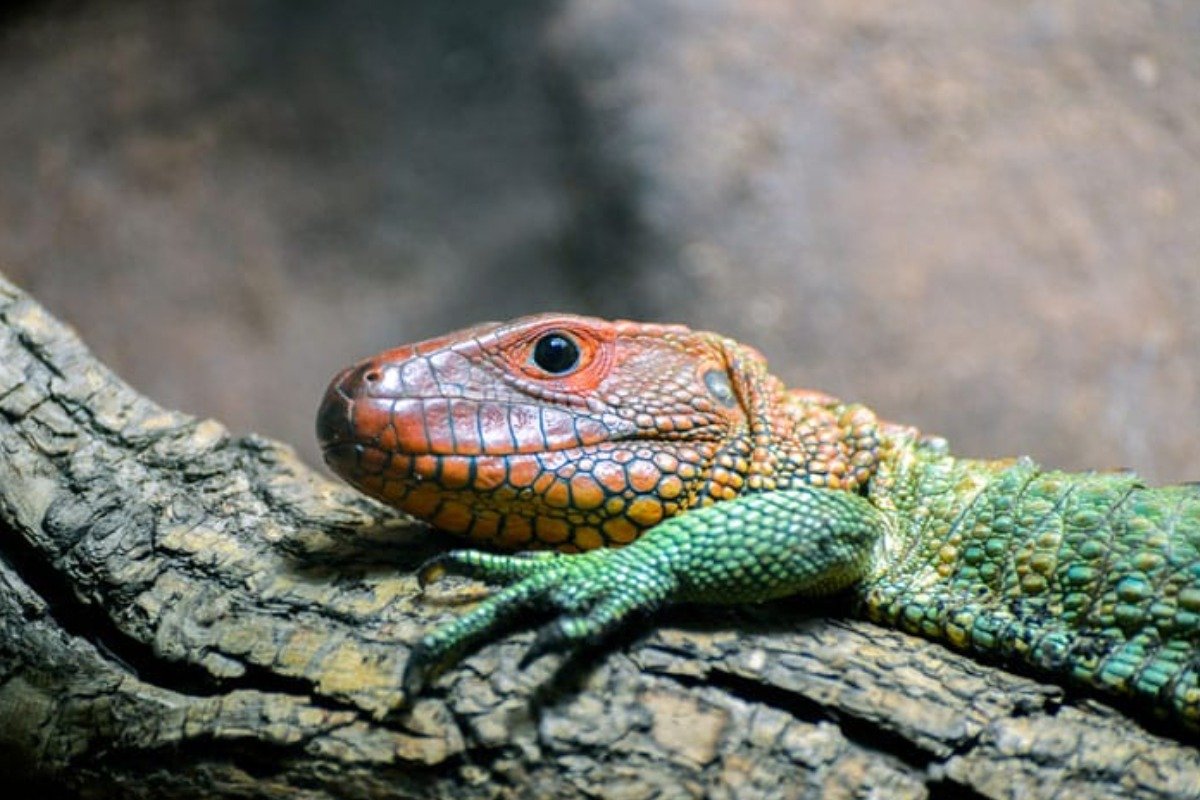
Temperature Management
In order to set the appropriate thermal conditions in the caiman lizard enclosure, it is necessary to maintain a gradient of 80°F to 95°F (27°C to 35°C). There should be a basking area, which should not go over 100°F (38°C) to allow for thermoregulation. High-quality ceramic heat emitters or halogen bulbs can be used to obtain this temperature range, and a thermostat should be used to maintain these conditions. Regular monitoring of the conditions should be performed with the aid of digital thermometers and infrared temperature guns.
Humidity Management
Humidity levels of caiman lizards are between 70% to 80% which indicates that they do well in environments that are highly humid. In order to achieve this level of humidity, an automatic misting system can be used, or regular manual misting can be done, and a large water basin can also help. It is advisable to place hygrometers in the enclosure so that the humidity can be measured and the parameters can be adjusted in order to enhance the ecological parameters.
Design of enclosure
The enclosure must be quite large, at least 6 feet long, 3 feet wide, and 4 feet tall, as they are active and semi-aquatic creatures. The enclosure materials should be robust and easy to clean as well. Incorporate natural elements, such as branches, rocks, and water, which will create an interesting environment that promotes natural behaviors. Proper ventilation is vital to avoid excessive humidity problems while also containing sufficient moisture through planning and maintenance.
Best Substrate Options for caiman lizard pet
While looking to provide the perfect substrate for my caiman lizard pet, Thanks to their great moisture retention and antifungal properties, cypress mulch is often recommended as an optimal substrate for lizards requiring a humid environment. Another popular substrate is coconut coir because it is soft enough to reduce the chances of injury to the lizard but still retains moisture. Sphagnum moss is classified as a substrate on its own, but more often, sphagnum moss is mixed with other substrates for an increase in humification effects and more realistic-looking bedding. I then concluded that if I mixed these three substrates, it would be similar to the Caiman Lizards in the wild, where they are both comfortable and healthy.
Essential Terrarium Features for Reptile Comfort
To set up a suitable caiman lizard pet terrarium, I use all the recommendations and technical dimensions referred to in reptile care literature. These are reliable climbing covers, a large water compartment, and a reasonable degree of temperature and humidity. These parameters make sure that there are sufficient robust branches within the enclosure to facilitate climbing which is a natural caiman lizard behavior reasonably. The water compartment, which is 30-50% of the floor area of the terrarium, makes it possible for caiman lizards to swim and bathe as they are semi-aquatic. For temperature, an ambient of 80′F – 85′ F (27– 29′C), a peak basking area of 95’F (35′C) is normal, and a moisture level which is between 60 – 80% is achieved by using misting systems and moisture retaining substrates. These technical parameters provide a friendly and functional environment suitable for the well-being of the lizard.
What Do Caiman Lizards Eat?
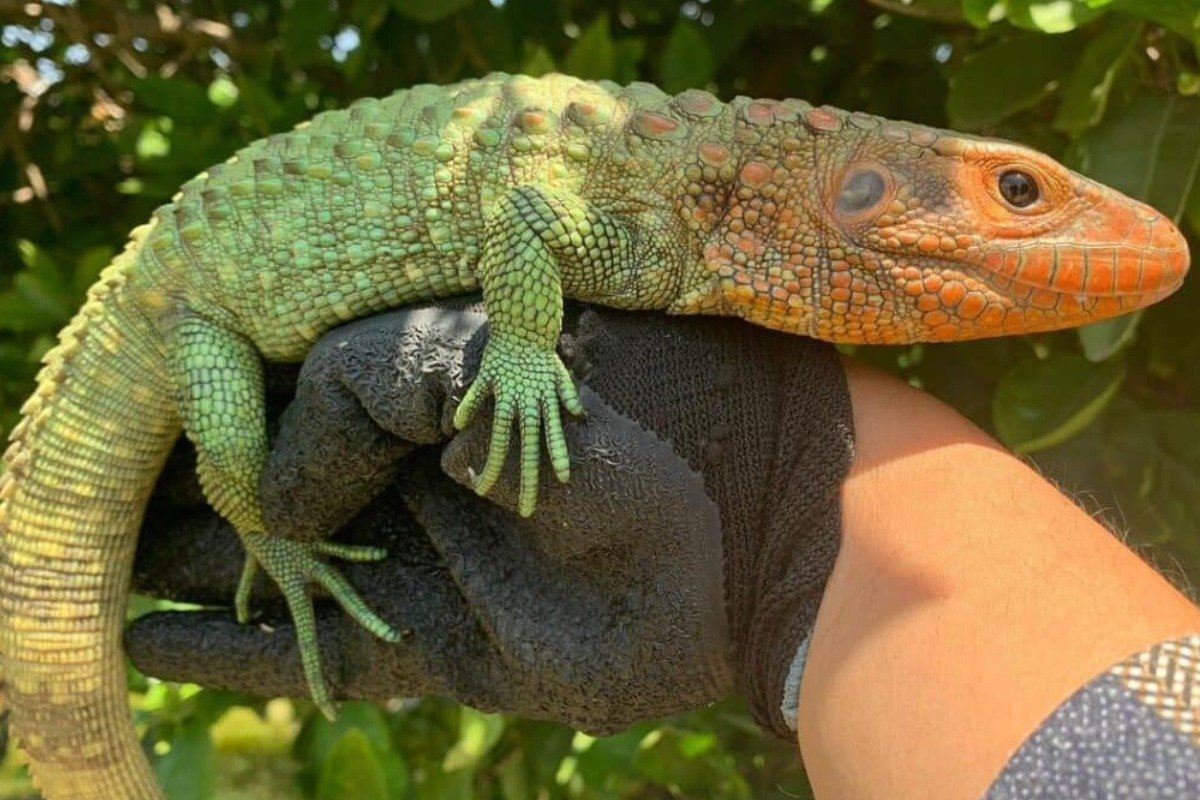
Caiman lizards are carnivorous by nature, and their diet includes a diverse range of food items accordingly. In their aquatic habitat, they are dominantly tide over by aquatic snails thanks to the impressive adaptation of jaws optimally developed for the purpose of shell crushing. Besides, other less popular food sources like crustaceans, insects, and small fish are also eaten by caiman lizards, which allows them to have their fair share of protein and other important nutrients. Dependence on such food items makes them ineffective in captivity, where simulating such a diet becomes important for welfare and good health and is usually done by providing a similar range of proteins. This can include land snails, shrimp, fish fillets, and commercial reptile pellets that are good for large lizards. In order to achieve these, it is important to ensure the inclusion of these components in the diet of these lizards so as to enable them to satisfy these components.
Understanding the Diet: Lizards Eat in Captivity
As I observed the dietary requirements of my caiman lizard pet in captivity, I understood that one of the most important aspects is to provide the animals with a diverse menu. It is for this reason that I occasionally keep land snails and fresh shrimp at hand in order to meet their vermivorous tendencies as well as to simulate the preference for aquatic snails. I also provide them with small fish or fish fillets that are nontoxic as well as safe, which they would otherwise prey on in the wild, and which is a good source of protein. Furthermore, I also mix in the meals with commercial reptile pellets designed especially for big lizards to make sure that they get the required balance of vitamins and minerals. This multifaceted technique enables me to maintain the good health of my caiman lizard by fostering proper eating patterns in it.
Benefits of Eat Snails for Caiman Lizards
In the case of caiman lizard pets, it looks like feeding them snails would work best for their nutrition. I have consulted and also confirmed this. Apart from being protein-rich, calcium is also abundant in their shells. In addition, they are also able to help with the natural feeding habits of the caiman lizard by providing a means to strengthen the jaw. Therefore, I am able to guarantee that the inclusion of such snails does provide the lizard with the right nutrients for its vitality, bone development, and metabolism. Such practices are also consistent with what experts advise regarding diet in captive caiman lizards.
Food Variety: What Other Lizards Will Eat
While looking at the diet of different lizard species, I’ve come to the conclusion that having a wide variety of food is very important for satisfying their respective nutritional requirements; while they do well on snails and shrimp, which are protein-rich foods, there are other lizards that have different nutritional needs, for example, herbivore lizards such as iguanas should be fed collard greens and squashes which are rich in vegetables. Also, omnivorous species, including the bearded dragon, are known to feed on crickets and mealworms, which are insects, and a wide range of plants, which makes them decently balanced. Regarding the specifics of feeding lizards, factors such as managing the size of food to avoid choking, keeping the ratio of calcium to phosphorus at 2:1, and providing variety in food to prevent vitamin mineral deficiencies are crucial. By following these specific parameters and using these food items, I can guarantee each type of lizard lives their best and healthiest life possible.
Maintaining Optimal Humidity Levels for Caiman Lizards
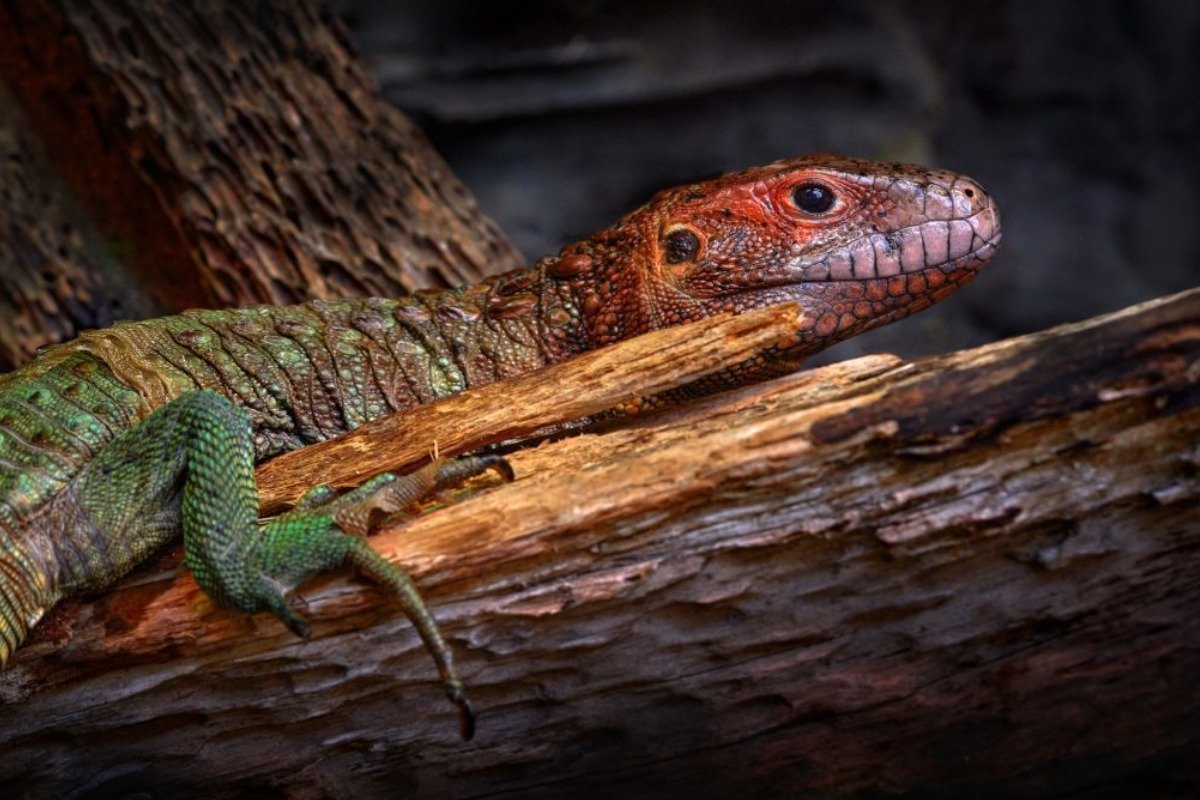
The first and most important step when setting the humidity for caiman lizards is to try and recreate their natural habitat as accurately as possible. The aim is to sustain their overall health as well as their physiological needs. The combinations of reputed sources used by me in my research state that the ideal humidity should, in all cases, be contained within the range of 60-80. Humerous levels such as these also assist with shedding, respiratory, and general comfort. Percent humidity in this range can readily be achieved through the use of high-end misting systems that provide enough moisture. Moreover, moisture-retentive materials such as sphagnum moss and cypress mulch assist in achieving the desired humidity while also preventing humidity from increasing or decreasing drastically. A precise measurement can only be obtained through a reliable hygrometer, and I tend to shift the humidity levels of my caiman lizard according to the results of this measurement.
Tools for Monitoring Humidity in the Enclosure
I’ve always put my effort in ensuring that the humidity level for my caiman lizard is maintained at a precise level. To achieve that, One of the most popular devices I use for my work is the digital hygrometer, which allows me to monitor humidity levels easily for the creature’s enclosure. I have a humidity meter with a display and an alarm that helps me react quickly if the humidity changes. Further, a Thermo-Hygrometer can also help in constantly assessing the temperature and humidity throughout the animal’s enclosure. I like installing automated mist, such as high-pressure foggers, which are adjusted through the reading from the humidity sensors to maintain equal humidity in the enclosure. Ensuring that all factors are in place gives me the ability to respond and adjust these variables as needed and ensure that the humidity levels are optimal for my lizard.
How to Mist and Create a Semi-Aquatic Environment
Achieving the right mix of humidity, burrow depth, substrate moisture, and water quality in a semi-aquatic habitat is nothing short of tricky. And I have used it to plan the construction process. It is advisable to design the enclosure in a way that there exists both a water and land area where the lizard can swim and display natural behaviors. I would, however, ensure there is enough water in the enclosure to enable swimming but easy-to-manage water sanitation. To prevent bacterial growth in the water and maintain the required water quality, frequent water changes are required. I would mix the sand with coco coir as a robust substrate to support burrowing and humidity on land.
I would also incorporate an automatic misting system into the enclosure, which is set to be strong enough to comply with the hygrometer readings, and the mist cycles are spaced to range between 60% and 80% humidity levels. Misting is equally crucial as the system breaks the spray into fine particles, which dry quickly, thereby imitating rain. Other areas that require dry spots, like some parts of the plants and interior walls of the enclosure, require daily manual misting to facilitate total saturation. In conclusion, having a set structure in the specific habitat, in addition to constant misting, senses a caiman lizard’s health while enriching its tropical native surroundings.
Importance of Live Plants like Dracaena Guianensis
Integrating live flora, such as Dracaena Guianensis, into the habitat of my caiman lizard has several advantages, as corroborated by various landmark sources. To begin with, these plants assist in the increase of overall humidity, which is necessary for respiratory function and skin shedding, through increased moisture levels by means of transpiration. I find Dracaena guianensis to be the most useful because its broad leaves provide cover and shade, thus mimicking the natural habitat of the lizard. Technically, however, the growth of these plants also entails providing enough exposure to light, usually artificial UVB lighting, which simulates daylight. In addition, regular irrigation and exposure to a nutrient-rich substrate are also necessary to preserve their health. Thus, by adding live plants in this way, I improve the visual and practical value of the enclosure, which, through increasing the authenticity of the enclosure, improves the life of my caiman lizard.
Understanding UVB and Heat Requirements for Caiman Lizards
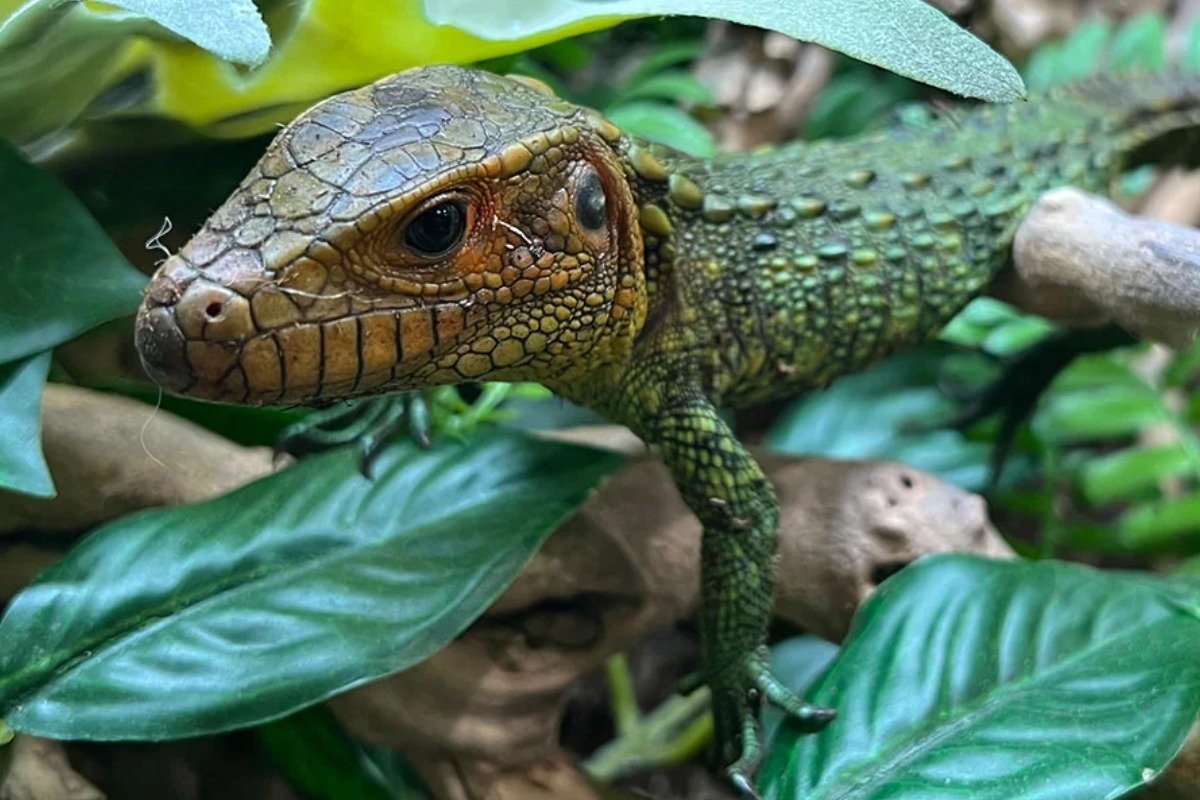
The correct amount of UVB light and the proper heat levels are crucial when caring for Caiman lizards as they help create their natural habitat and enhance their overall health. Caiman lizards need them because they lack the ability to synthesize vitamin D3 without exposure to UVB, which leads to problems in calcium absorption needed for bones and metabolism. Specialized UVB bulbs can achieve this but have to be set at a suitable distance in order to provide 10%-12% UVB output without causing burns. Furthermore, a basking zone temperature of between 90 and 95 degrees F should also be within an enclosure that has a temperature of between 75 and 85 degrees F to provide the Caiman Lizard with optimal conditions. To provide these conditions, one can use either heat lamps or ceramic heat emitters; however, these heaters must be placed keeping in mind the ideal temperature, which helps provide the natural behavioral patterns needed for normal thermoregulation. Ensuring that the physiological needs of the Caiman lizard are being met also ensures a consistent amount of UVB light is being provided; thus, routinely checking the conditions is recommended when taking care of such a lizard.
Choosing the Right UVB Bulb and Heat Lamp
To properly combine the UVB bulb and the heat lamp with my caiman lizard pet spouse, The adjustment in the focus of this research is that I choose a UVB bulb that has an output of 10%-12% as this assists in vitamin D3 synthesis and calcium intake, which is significant in bone growth and health. Out of several alternatives, I opted for a linear fluorescent tube, which gives good linear distribution of light and is good for covering larger portions of the enclosure. I prefer a ceramic heat emitter as a heat lamp because it can create basking temperatures without producing light, thereby maximizing the basking effect while keeping the diurnal cycles intact. These heating features have been spaced out strategically to provide effective UVB and temperature shielding to the lizard’s enclosure, along with providing reasonable room for daylight.
The Role of Bask Areas in Lizard Care
Basking areas are important structures in lizard management, allowing different reptiles to thermoregulate and, in turn, facilitate metabolic and physiologic operations. I make sure that the basking area of my caiman lizard pet has a temperature of between 90°F and 95°F, which is conducive for basking. This is done by positioning a ceramic heat emitter or a heat lamp on a specific platform correctly so that the heating is even. Regular monitoring of these temperatures using accurate digital thermometers makes sure that the values are precise and within the recommended ranges. Furthermore, I afford my lizard a comprehensive heat gradient by placing the heat source on one side of the enclosure so that it can shift to cooler parts about 75°F – 85°F when the need arises. This configuration resembles the climatic conditions, thereby stimulating normal basking activity, which is essential for its growth, health, and well-being.
How Long Do Caiman Lizards Live?
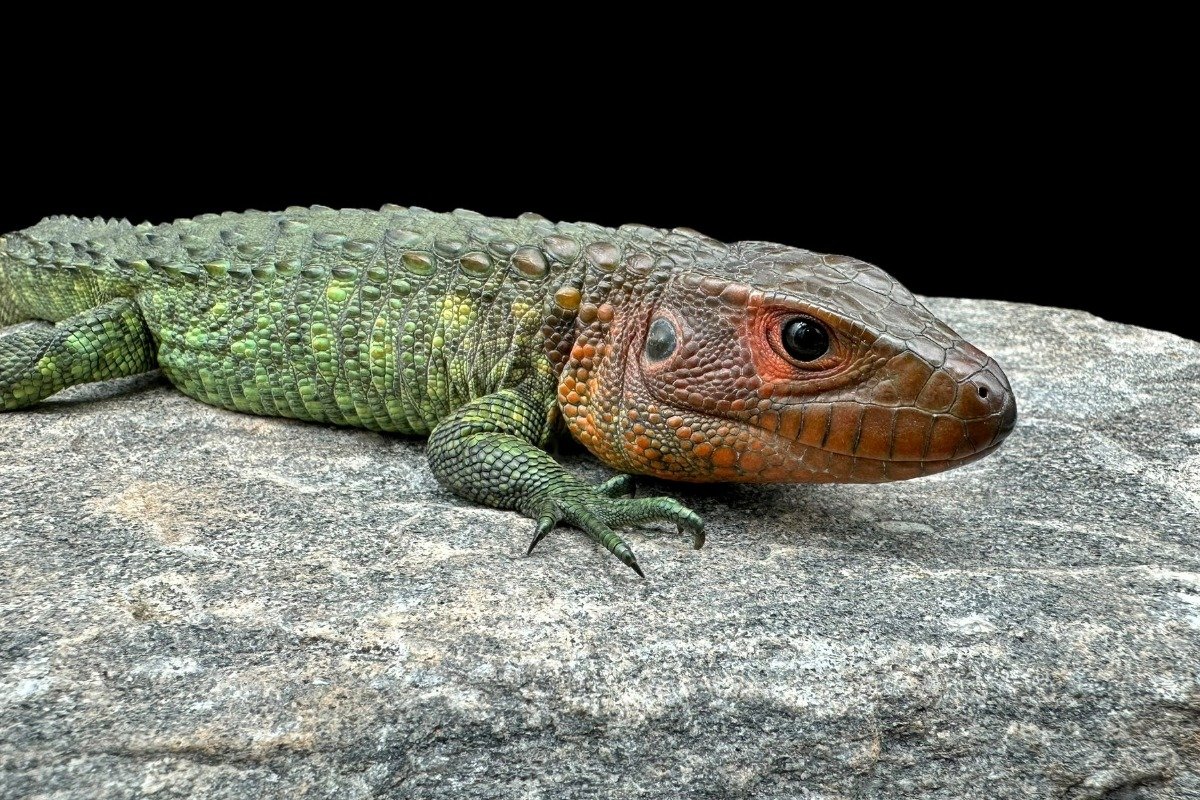
When kept in captivity, with adequate care, Caiman lizards (Dracaena guianensis) usually tend to live between 10 to 20 years. Several elements shape their longevity, including a suitable enclosure that imitates their natural habitat, an appropriate humidity and temperature level, and lighting UVB, along with adherence to adequate nutrition. Regular check-ups with a certified exotic vet also play a huge role in health management as they allow for the timely detection and treatment of any problems that arise. By adopting best management practices in the habitat and health care of Caiman lizards, you will make the best out of the lifetime of these extraordinary animals.
Factors Affecting Caiman Lizard Lifespan
In order to evaluate the factors that impact the life span of my caiman lizard pet, the caiman’s lizard diet should be protein- and calcium-rich since malnutrition can be harmful to their health and reduce their lifespan. Hence, Maternal and infant healthcare strategies emphasize the importance of proper nutrition for mothers and their children. Proper dietary supplements, including a balanced diet, will enhance their health and, thus, longevity. Secondly, crossing between in-situ or climate-controlled breeding specimens with an in-degree of evolution is another way of creating more RAM, considering the more effects the PEG will have. As for the fans’ installation, there is sufficient evidence to show that UVB bulbs do have an effect on bone density. This is because all of the above are factors crucial to the health of the caiman lizard. Thirdly, with the advancement in pet care technology and the eventual innovation of robotic feeding devices, various pet-related tasks can now easily be completed with relative ease. Regular checkups with good exotic veterinarians allow for issues such as diseases or even infections to be caught early. Utilizing this gained wisdom, I understand the proper décor that would be suitable for my caiman lizard and, without a doubt, maximize its life span.
Common Health Issues in Captivity and Prevention
As I take care of my caiman lizard in captivity, I am aware of some critical aspects, alongside several ways to prevent them. For example, respiratory infections are commonly caused by moisture and temperature not being up to the standard. Quite contrary to this, I always make sure the humidity and the temperature gradients in the enclosure are at the right levels. Another area of concern is Metabolic Bone Disease (MBD), which is caused by a lack of calcium or vitamin D3. In order to prevent this, I’m sure enough calcium intake and exposure to Vitamin D3 is provided through a good diet and the right amount of UVB light. If left unattended, internal and external parasites, for instance, can infest my lizard. To prevent this, I try to minimize the chances of infestation with regular check-ups and a clean living space.
Best Practices to Handle Your Caiman Lizard
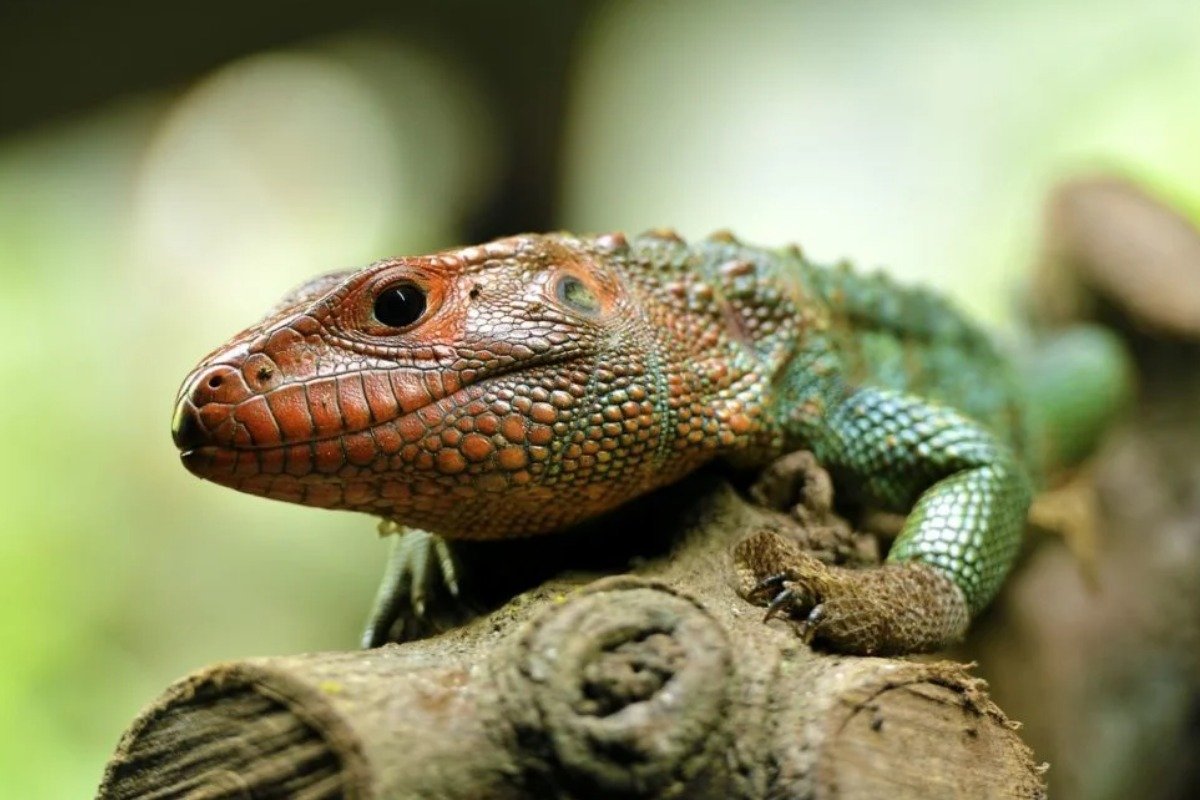
The leverage that a caiman lizard pet requires, whether it be for petting, feeding, or even holding, might require the activity to be performed with due care and patience; otherwise, it can be harmful to them and the reptile who is being handled as well. To enable us to gain trust and comfort, these lizards should be precisely handled at a young age, enabling them to get used to human interaction. Use slow and careful activities as they may spook them out, and remember to come from the sides rather than the top, as that might create a bigger issue in the long term. When picking the lizard up, make sure to support the whole body, which includes the chest, in order to enable them for comfort. The recommendations suggest engaging in regular short, managing to extend sessions in place such that the lizard can get accustomed to being handled. When the lizard appears puffed up, starts hissing, or seems to be getting aggressive in an open-mouth posture, never handle them at such times to ensure that the lizard does not bite or act defensive. When engaging in petting or feeding and following the guideless while understanding the body language of a lizard would not only help promote trust but also assist in strengthening the bond, creating an engaged environment between you and the caiman lizard pet.
Steps to Tame a Young Caiman Lizard
Young caiman lizards may be tamed through a specific procedure that is based on the literature of the best practices experts on lizard care. During the first phase, the first step of my taming involves providing a consistent environment and nurturing calmness. In the first place, I sit by its habitual place and make no attempts to get hold of it, and after some time, the lizard will be used to me being there. Then, how long the lizards live is the next problem at hand; I execute brief and light handling only, but this time, I make sure the lizard has been supported throughout the whole time. Following the expert recommendations, we were to stay calm and well within the lizard’s comfort zone, which meant staying warm, around 75°F to 90°F to prevent the lizard from distressing. I make sure to focus on one lizard in particular and motivate the positive reinforcement mechanism to associate hand maintenance with treating, sticking to a schedule since order is very key in earning trust. Moreover, handling lizards must be compatible with common actions that lizards do to minimize the amount of stress, which, in turn, would allow the process of taming to start from a gradual approach. It is my intention to strengthen the caiman lizard’s trust by carrying out the most important principles and not putting its natural instincts and comfort zones at risk.
How to Safely Handle These Crocodilian Reptiles
I have a systematic approach to safely handling my caiman lizard pet. First of all, I always try my best to make them feel comfortable and safe by cradling both their chest and abdomen with both my hands to carry out full body support. In handling the lizard, I ensure that I make slow and controlled movements so as not to put the saurians under stress or scare them, which may result in rapid movements. Enclosures, too, are of particular concern and standard; I ensure that all parameters, notably temperature, and humidity, are perfect prior to handling, as this settles stress-inducing issues. On that note, I take keen observations of the tail behavior and mouth jaw movements of the lizard; if these features show signs of discomfort, like tail whipping or wide open jaws, then I stop touching them. Such coherence in the manner in which these techniques are administered, while avoiding conflict with the animals’ instincts, helps to generate trust and sense of safety, which aids in improving the interaction with the animals over time.”
References
- Caiman Lizard Care Sheet – Reptiles Magazine
- Caiman Lizard Care Sheet – DubiaRoaches.com
- Caiman Lizard Care And Information – Reptiles Magazine
Frequently Asked Questions (FAQ)
Q: How large can caiman lizards get?
A: Caiman lizards can grow quite large, often reaching lengths of 4 to 5 feet. It’s important to provide a large enclosure to accommodate their size and ensure they have enough space to swim and explore.
Q: What type of environment do caiman lizards like?
A: Caiman lizards are semi-aquatic lizards that thrive in environments that mimic their natural habitat, which includes both land and water areas. These reptiles are native to South America, often found in swamps and rainforests, so they prefer humid, warm environments with plenty of water to swim around.
Q: What should be included in a caiman lizard’s enclosure?
A: A caiman lizard’s enclosure should include a large water tank or section for swimming, a basking area with a heater, and plenty of space to roam. The enclosure should also be equipped with the best UVB bulbs for caiman lizards to ensure they receive enough light for proper health.
Q: What do caiman lizards eat?
A: Caiman lizards are carnivores, primarily eating snails, insects, and small fish. In captivity, it’s best to provide a varied diet that mimics their natural food sources to keep the lizard healthy.
Q: How can I keep the humidity levels suitable for a caiman lizard?
A: To keep the humidity at the appropriate level, you can mist the enclosure regularly and include a large water area. Additionally, using a hygrometer to monitor humidity and maintaining a swamp-like atmosphere will help keep your caiman lizard comfortable.
Q: Are caiman lizards suitable for beginner reptile keepers?
A: Although caiman lizards can be fascinating pets, they require advanced care and a significant commitment, making them more suitable for experienced reptile keepers. Beginners might find the care requirements challenging.
Q: How often should I clean the caiman lizard’s enclosure?
A: It’s best to clean the caiman lizard’s enclosure weekly, removing waste and uneaten food to maintain hygiene. The water area should be cleaned more frequently to prevent bacterial build-up.
Q: Can caiman lizards be housed together?
A: Caiman lizards are typically solitary and can be territorial, so it’s best to house them individually to prevent aggression and stress. If you decide to attempt cohabitation, close monitoring is necessary.
